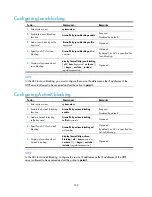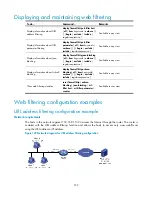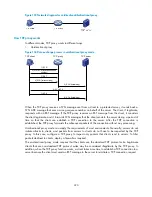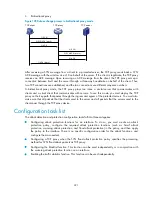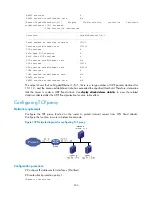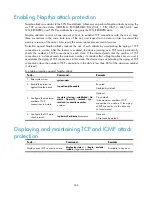
391
2.
Bidirectional proxy
Figure 135
Data exchange process in bidirectional proxy mode
TCP client
TCP proxy
TCP server
1) SYN
2) SYN ACK (win=0)
4) SYN
5) SYN ACK (win=n)
7) ACK (win=n)
3) ACK
6) ACK
After receiving a SYN message from a client to a protected server, the TCP proxy sends back a SYN
ACK message with the window size of 0 on behalf of the server. If the client is legitimate, the TCP proxy
receives an ACK message. Upon receiving an ACK message from the client, the TCP proxy sets up a
connection between itself and the server through a three-way handshake on behalf of the client. Thus,
two TCP connections are established, and the two connections use different sequence numbers.
In bidirectional proxy mode, the TCP proxy plays two roles: a virutal server that communicates with
clients and a vitual client that communicates with servers. To use this mode, you must deploy the TCP
proxy on the key path that passes through the ingress and egress of the protected servers. You must also
make sure that all packets that the clients send to the server and all packets that the servers send to the
clients pass through the TCP proxy device.
Configuration task list
The attack detection and protection configuration tasks fall into three categories:
•
Configuring attack protection functions for an interface. To do so, you must create an attack
protection policy, configure the required attack protection functions (such as Smurf attack
protection, scanning attack protection, and flood attack protection) in the policy, and then apply
the policy to the interface. There is no specific configuration order for the attack functions, and
configure them as needed.
•
Configuring a TCP proxy when the SYN flood attack protection policy specifies the processing
method for SYN flood attack packets as TCP proxy.
•
Configuring the blacklist function. This function can be used independently or in conjunction with
the scanning attack protection function on an interface.
•
Enabling the traffic statistics function. This function can be used independently.


